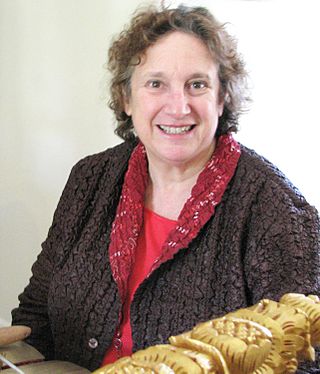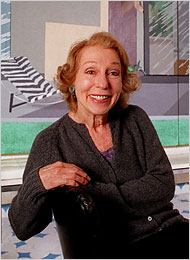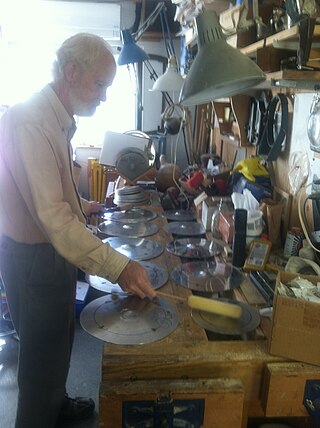
Gamelan is the traditional ensemble music of the Javanese, Sundanese, and Balinese peoples of Indonesia, made up predominantly of percussive instruments. The most common instruments used are metallophones played by mallets and a set of hand-played drums called kendhang/Kendang, which register the beat. The kemanak and gangsa are commonly used gamelan instruments in Bali. Other instruments include xylophones, bamboo flutes, a bowed instrument called a rebab, a zither-like instrument siter and vocalists named sindhen (female) or gerong (male).

Lou Silver Harrison was an American composer, music critic, music theorist, painter, and creator of unique musical instruments. Harrison initially wrote in a dissonant, ultramodernist style similar to his former teacher and contemporary, Henry Cowell, but later moved toward incorporating elements of non-Western cultures into his work. Notable examples include a number of pieces written for Javanese style gamelan instruments, inspired after studying with noted gamelan musician Kanjeng Notoprojo in Indonesia. Harrison would create his own musical ensembles and instruments with his partner, William Colvig, who are now both considered founders of the American gamelan movement and world music; along with composers Harry Partch and Claude Vivier, and ethnomusicologist Colin McPhee.

Pelog is one of the essential tuning systems used in gamelan instruments that has a heptatonic scale. The other, older, scale commonly used is called slendro. Pelog has seven notes, but many gamelan ensembles only have keys for five of the pitches. Even in ensembles that have all seven notes, many pieces only use a subset of five notes, sometimes the additional 4th tone is also used in a piece like western accidentals.

SlendroPlay (help·info) is one of the essential tuning systems used in gamelan instruments that have pentatonic scale. Based on Javanese mythology, the Slendro Gamelan tuning system is older than the pélog tuning system.
William (Bill) Colvig was an electrician and amateur musician who was the partner for 33 years of composer Lou Harrison, whom he met in San Francisco in 1967. Colvig helped construct the American gamelan used in works such as the puppet opera Young Caeser [sic] (1971), La Koro Sutro (1972), and the Suite for Violin and American Gamelan (1974).

Dennis Murphy was a composer, musician, instrument maker, artist, and playwright.

A gendèr is a type of metallophone used in Balinese and Javanese gamelan music. It consists of 10 to 14 tuned metal bars suspended over a tuned resonator of bamboo or metal, which are tapped with a mallet made of wooden disks (Bali) or a padded wooden disk (Java). Each key is a note of a different pitch, often extending a little more than two octaves. There are five notes per octave, so in the seven-note pélog scale, some pitches are left out according to the pathet. Most gamelans include three gendèr, one for sléndro, one for pelog pathet nem and lima, and one for pelog pathet barang.

Mantle Hood was an American ethnomusicologist. Among other areas, he specialized in studying gamelan music from Indonesia. Hood pioneered, in the 1950s and 1960s, a new approach to the study of music, and the creation of the first American university program devoted to ethnomusicology, at the University of California, Los Angeles (UCLA). He was known for a suggestion, somewhat novel at the time, that his students learn to play the music they were studying.

A kempul is a type of hanging gong used in Indonesian gamelan. The kempul is a set of pitched, hanging, knobbed gongs, often made of bronze, wood, and cords. Ranging from 19 cm to 25,4 cm in diameter, the kempul gong has a flat surface with a protruding knob at the center and is played by hitting the knob with the "soft end of a mallet." "The wooden mallet used has a ball shape head with heavy padding on a short wooden handle. The number of kempul gongs present in a gamelan ensemble varies but, "although there can be two to ten kempul on one separate rack, it is common to have five kempul hanging on the same rack as the Gong ageng and gong siyem".

Jody Diamond is an American composer, performer, writer, publisher, editor, and educator. She specializes in traditional and new music for Indonesian gamelan and is active internationally as a scholar, performer, and publisher.

The gong ageng is an Indonesian musical instrument used in the Javanese gamelan. It is the largest of the bronze gongs in the Javanese and Balinese gamelan orchestra and the only large gong that is called gong in Javanese. Unlike the more famous Chinese or Turkish tam-tams, Indonesian gongs have fixed, focused pitch, and are dissimilar to the familiar crash cymbal sound. It is circular, with a conical, tapering base of diameter smaller than gong face, with a protruding polished boss where it is struck by a padded mallet. Gongs with diameter as large as 135 centimeters have been created in the past, but gongs larger than about 80 centimeters are more common especially to suit the budget of educational institutions.
The American Gamelan Institute (AGI) is an organization devoted to promoting and documenting all forms of gamelan, the performing arts of Indonesia, and their international counterparts.

Gamelan, although Indonesia is its origin place, is found outside of that country. There are forms of gamelan that have developed outside Indonesia, such as American gamelan and Malay Gamelan in Malaysia.
(Joseph) Vincent McDermott was a classically trained American composer and ethnomusicologist. His works show particular influence from the musics of South and Southeast Asia, particularly the gamelan music of Java. He was among the second generation of American composers to create and promote new compositions for gamelan.

Betty Freeman was an American philanthropist and photographer.

Daniel Schmidt is an American composer and builder of American gamelan. He currently teaches gamelan and instrument building at Mills College. He is also a long-time collaborator with composer Paul Dresher.
Gamelan Pacifica is an American musical ensemble, as well as a non-profit music and dance foundation that focuses on cross-cultural and interdisciplinary collaboration. Formed as a community group in 1980, the group plays the gamelan, and is as of 2022 ensemble in residence at the Cornish College of the Arts in Seattle. The ensemble is directed by Jarrad Powell.
Jonathon Grasse is an American composer, ethnomusicologist, and improvising electric guitarist. He is a professor of music at California State University, Dominguez Hills.












